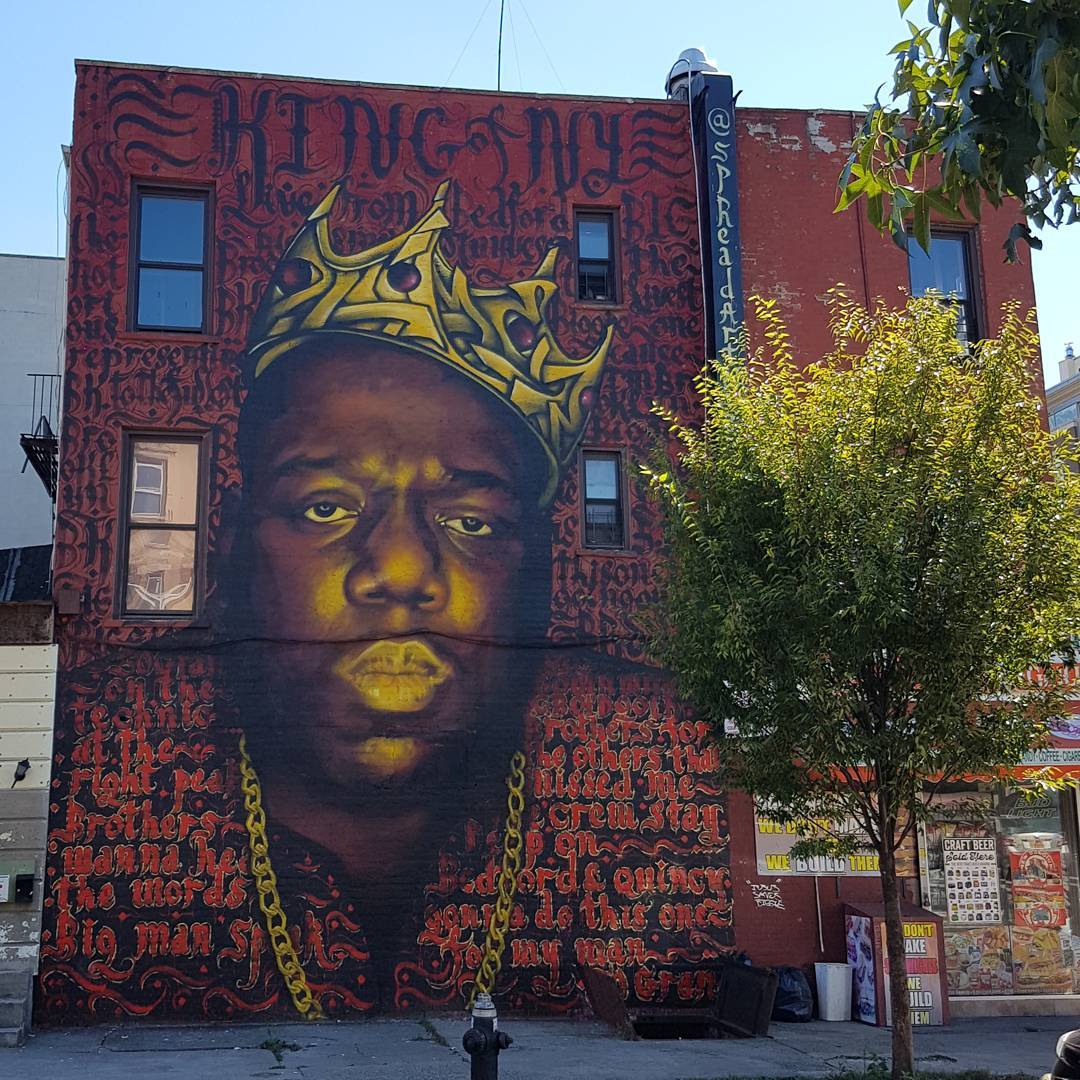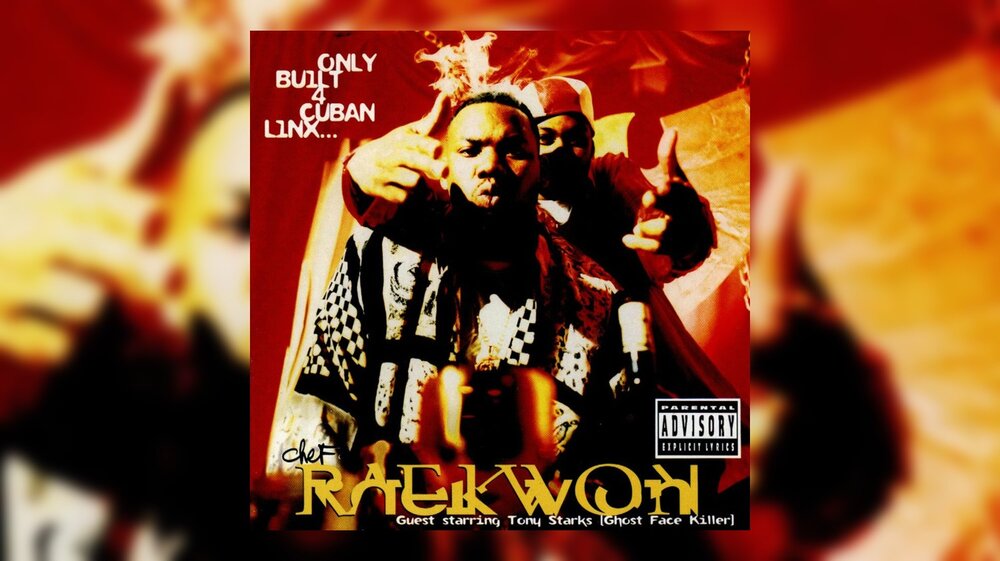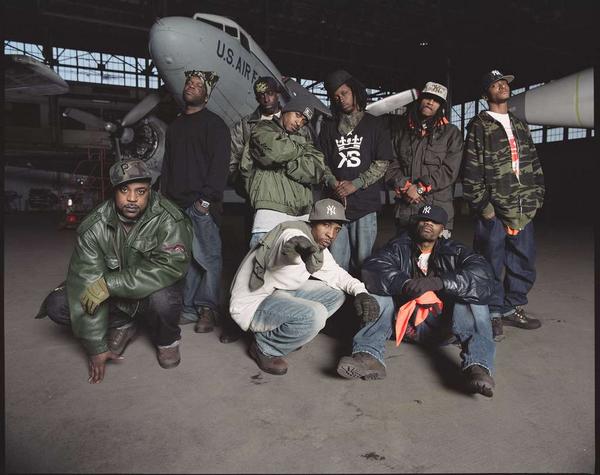We all know the origins of Hip Hop.
It was born out of the harsh realities of the Bronx during a time where life was hard, opportunities were limited and the streets were institutions of learning in which you could either learn to overcome or fall prey to the environment. But from these lessons rose a sound first designed for the party atmosphere, when the Sugar Hill Gang gave us “Rapper’s Delight” and Grand Master Flash and the Furious Five dropped “Freedom.”
But eventually the music had to reflect the realities of the environment and experiences these artists faced, and so a harder sound started to emerge with songs like “The Message”, which gave way to socially conscious Hip Hop and gangster rap of the late ’80s and early ’90s.
As the latter art form began to dominate the rapidly developing culture, the east coast went back to its roots and looked to the streets for its new sound and future, which was found on St. James place in Brooklyn in the name of Christopher Wallace.
Biggie’s life story and rise to fame has been well documented, but with “Biggie: The Life of The Notorious B.I.G.” on A&E, we were reminded of a time in which Hip Hop had soul and Biggie dominated the scene.
Biggie: The Life of the Notorious B.I.G. – Official Trailer | Premieres September 4 | A&E
‘Biggie: The Life of the Notorious B.I.G.’ offers a look into the life of Biggie Smalls, as the biggest names in hip-hop, including Jay Z, Nas, 2 Chainz, Mike Will, and T-Pain, talk about the late rapper’s legacy.
The early to mid ’90s was a time of legendary albums and artists, when the success of ’80s Hip Hop opened the doors for the genre to flourish, and through Bad Boy, Diddy and B.I.G., we were gifted with a new sound, a new style and a new symbol which represented so many things to so many people, especially those from the streets of Brooklyn.
“He had the look,” said Nas in the documentary. “He had the presence; the vocal presence and the physical presence on the stage. He looked like a king.”
And for those of us who were fortunate enough to be a part of that era, we were able to reminisce about a period in which foundations were built, styles were created, institutions were developed and a culture was birthed for all to enjoy.
Watching the documentary had me wax nostalgic, reminding me of arguably the greatest period in urban culture. It was a decade which showed us the stories of the hood and Black life through films such as “Boyz N the Hood,” “Strictly Business,”
“Juice” and “Menace II Society.”
It was a time dominated by Jordan and the Bulls, and for those of us in New York, it was a decade in which we were proud to be Knicks fans, despite the heartache of painful losses and unfulfilled championship dreams.
It was when a time where we couldn’t wait for our monthly issues of The Source and Vibe to arrive so we could check out the latest music, newest artists and the latest styles from lines such as FUBU, Karl Kani and Cross Colours. It was a time of Black excellence on TV, where “The Cosby Show” and “A Different World” opened the doors for “In Living Color,” “Martin,” “Living Single” and “New York Undercover.”
New York Undercover Season 1 Opening
September 1994
It was a time where patience was a must, for the immediate gratification of today’s social media dominant society was non-existent, so we had to wait for new show episodes each week, wait for monthly publications to arrive and, for those of us involved in music, had to wait for new music Tuesday before we could buy the latest CD.
Watching the old clips of B.IG. rapping on the street as a teenager took me back to when cyphers would erupt on almost every street corner in the city. When you went to 125th or downtown Brooklyn to buy the latest mixtape from DJs such as Ron G, DJ Clue or DJ Juice. When I couldn’t wait until Friday so I could hit up Rock and Soul on 35th street and Broadway to buy the latest singles on vinyl I would be playing at the club later that night.
It reminded me of the lengths we had to go to in order to promote a party or a new artist. The late nights running the streets, handing out flyers for upcoming parties at clubs like The Tunnel, Demerara, Webster Hall, Bentley’s, The China Club, the Soul Kitchen on Monday nights and so many other places across the city during a time when clubs were actually allowed to exist and parties were actually parties. It brought me back to the days of music street teams and nights of lugging crates loaded with vinyl to different clubs and lounges.
These early years of Biggie and Bad Boy was a time where young minds saw the future and captured it through music and style. Hearing Puff talk about how he wanted Big to be positioned and groomed as an artist while maintaining his connection with his roots founded in the streets reminded me of what Hip Hop was before it became commercialized, mainstream and transformed into the state that it exists in today. Back then the music was a reflection of the life and the culture which raised the artist and cultured the essence of the sound they were creating. It was pure originality, giving the world masterpieces that can never be duplicated, forgotten or surpassed.
We had classics like Wu-Tang’s “Enter the Wu-Tang (36 Chambers),” Nas’ “Illmatic” and of course “Ready to Die” by The Notorious B.I.G. in 1994. All mandatory albums for every music collection, but all albums which held a specific connection to the streets from which these men grew and learned. It wasn’t about simply finding a radio-friendly hook for airplay.
It was about using lyrical talent to describe a life story or experience. It was about sharing a bit of themselves with fans through the words and the beats, and bringing scenes to life through rhymes and flow. The music created during this time strengthened the fight started by rappers and labels such as Def Jam in the 80s, coercing the world to acknowledge, respect and include the sounds and artists into the mainstream. But even with this integration into mainstream culture, the artists and music maintained their connection with their roots, and this was a connection held sacred by fans, a connection that was evident throughout the documentary.
When the hearses drove Biggie and his family through the streets of Brooklyn on Tuesday March 18th, 1997, fans turned out in droves to pay their final respects to one of their own who made it out but who never forgot where he came from. And when someone threw on “Hypnotize,” the celebration of a life which meant so much to the people of the borough was on.
Notorious BIG funerals – Tribute in Brooklyn
The Notorious BIG’s funeral in brooklyn When someone put on ” HYPNOTIZE ” … BIG tribute
I remember the night Biggie died. I remember the early morning phone call from my brother and the activity outside on the streets as people began to hear the news about his death. It felt like we all lost a close friend that day, no matter where you were from. That’s what Biggie represented. That’s what this documentary demonstrated to those who weren’t there during his rise and what it reminded those of us who were there about. It was a manifestation of why tour buses stop in front of his childhood building on St. James Place. It’s why he’s immortalized on building facades and in the rafters at the Barclays Center.

Biggie was Hip Hop when Hip Hop had soul and held a connection that went beyond a hook or dance move. Biggie represented a path for those in dire circumstances to follow, one which could lead to success if they accepted that it was a grind that required hard work, sacrifice, patience and understanding. He made his mistakes and yet those around him who were affected forgave him and loved him for who he was, and you could see that over two decades after his death, the pain of losing him has never dissipated.
This documentary was more than just a tribute to Biggie and his life. It was an opportunity for everyone to remember who he was, what he meant and how he transformed Hip Hop from an art form into a life experience which built a connection that has not faded to this day.



